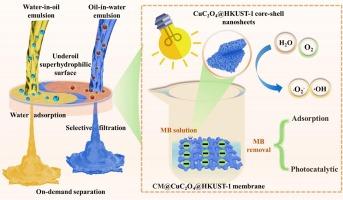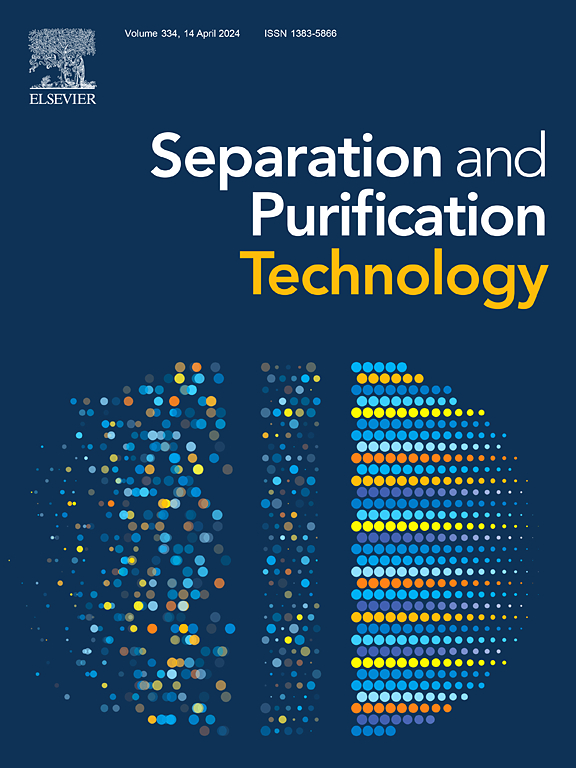Underoil superhydrophilic CuC2O4@Cu-MOFs core-shell nanosheets-coated copper mesh membrane for on-demand emulsion separation and simultaneous removal of soluble dye
Abstract
Underoil superhydrophilic surface is of great significance for the separation of water-in-oil emulsions, but its preparation is still a great challenge due to limited wetting thermodynamics. Herein, a well-designed hierarchical CuC2O4@Cu-MOFs (HKUST-1) core-shell nanosheets-coated copper mesh membrane was fabricated by facile immersion processes for on demand separation of oil-in-water and water-in-oil emulsions as well as highly efficient removal of soluble dyes. The as-fabricated hierarchical CuC2O4@HKUST-1 core-shell nanostructure endowed the mesh membrane with underwater superoleophobicity, underoil superhydrophilicity and excellent underwater oil anti-adhesion capability. Such superwetting MOFs-coated membrane delivered an outstanding separation performance for oil-in-water emulsion with high water flux of up to 1800 L m−2 h−1and the chemical oxygen demand (COD) value of lower than 110 mg L−1 by selective water filtration, whilst it efficiently separated water-in-oil emulsion by adsorption with a water content of lower than 120 ppm. Furthermore, the as-prepared mesh membrane also exhibited high removal efficiency of soluble dyes at circa 94% within 165 min by the adsorption-photocatalytic coupled process. The postulated photocatalytic mechanism of CuC2O4@HKUST-1 composite was ascribed to the photogenerated superoxide (O2−) and hydroxyl radicals (
OH). With the desirable separation performance to complex oil-in-water emulsion containing both emulsified oil droplets and soluble dyes, the as-synthesized mesh membrane enriches the preparation path of underoil superhydrophilic surface, and expands the application of MOFs-based membrane for complex oily wastewater treatment.


 求助内容:
求助内容: 应助结果提醒方式:
应助结果提醒方式:


